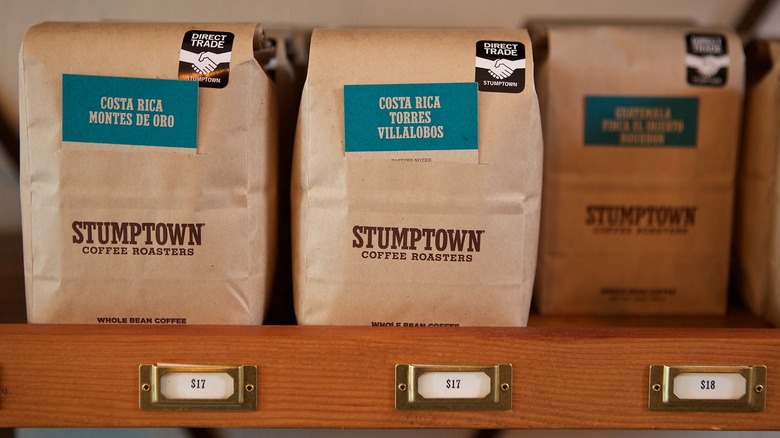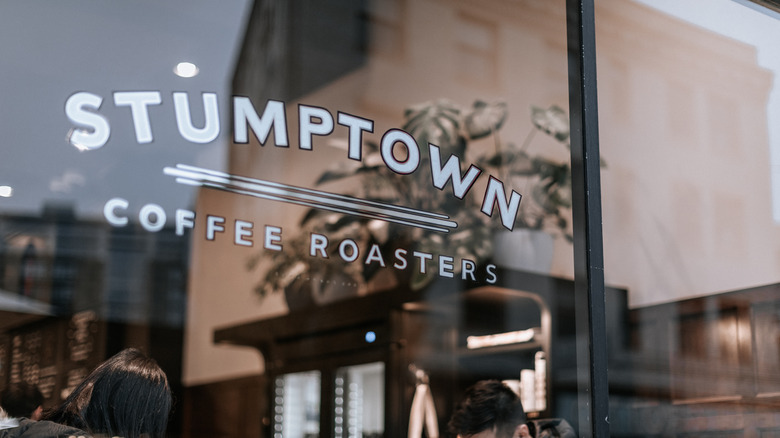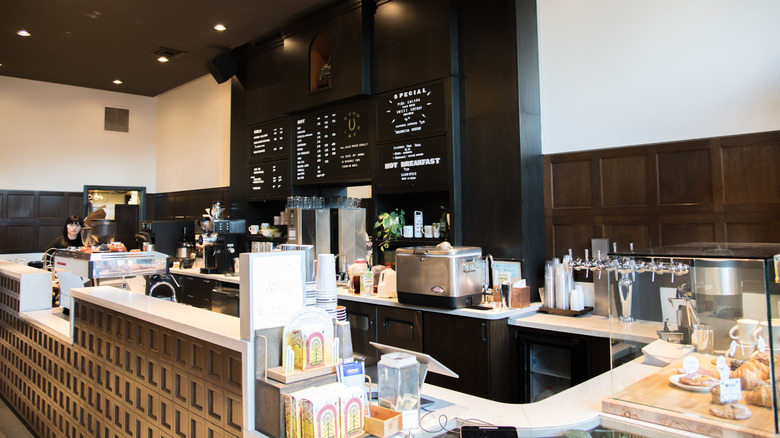What Makes The Beans From Stumptown Coffee Roasters Special?
When it comes to coffee beans, fans have opinions. If slinging a scoop of instant coffee into a mug suits your fancy, then keep on slinging. But, for diehard java aficionados, the bean is the name of the game. That's why, today, we're talking about Stumptown Coffee Roasters. Stumptown first hit the market in 1999 with a brick-and-mortar café in Portland, Oregon, says Insider, making it a relatively new roaster. Yet, earlier this year, Tasting Table ranked Stumptown as our number-one "Best Coffee Brand," topping brands that have been around for a century or longer. Why? It's that good.
Stumptown emphasizes the experiential aspects of coffee drinking. As the Stumptown website puts it, "Coffee is about pleasure." Prices run in the ballpark of $16-$23 per 12-ounce bag, so it's more of a splurge than your run-of-the-mill generic grocery store coffee. But, there's a reason behind the steep price tag. As the company itself explains, "Producing great coffee is expensive. We don't take that for granted and we never expect to get great coffee on the cheap." By compensating growers for a top-tier crop, tended with care, Stumptown is invested in offering a product that doesn't cut corners. Those coffee beans are still green when they finally pass through Stumptown's doors. At Stumptown Coffee Roasters, careful sourcing is what makes its beans special.
Stumptown is choosy about its sources
A quality roast is critical to a good cup, and Stumptown's roasters bring 121 collective years of experience to the game. Uniquely curated roasts aim to highlight the naturally-occurring features already within the beans. The company has remained relatively secretive about the details of the process but has shared that it's heavily calculated. For instance, since the roaster warms up throughout the day as it is used, the evening roast is 45 seconds shorter than the morning roast to account for the extra heat (per Insider). But before that, since coffee has twice the molecular complexity of red wine, the way those beans are treated from farm to mug counts.
According to Shauna Alexander, Stumptown's Vice President of Coffee and Sustainability, roasters travel the world to personally visit producers and scout sources. In fact, since 2003, roughly six months out of Stumptown's business year have been spent meeting with producers in fields and on coffee-drying decks in countries on the other side of the world. It's a business model Stumptown calls "Direct Trade," and the company says it was the first-ever company in the industry to implement the model. So, why does it make such a big difference?
Prioritizing the long game over market sales
By maintaining lasting relationships with small-scale, often family-operated growers, Stumptown Coffee Roasters can offer consistent beans from year to year. Currently, Stumptown has been collaborating with 91% of its producers for three years or longer. When selecting a new source, Stumptown favors tropical regions with high elevations, cool nights, warm days, and predictable precipitation patterns. Finer details like soil composition, post-harvesting processing methods, and microclimates are also taken into account.
Stumptown actually sources from more cities than it sells in. At present, the company works with growers in Colombia, Peru, Ethiopia, Guatemala, Papua New Guinea, Nicaragua, Costa Rica, Burundi, Honduras, Indonesia, and Rwanda. Yet, Stumptown only operates stores in four cities across the U.S. (Portland, Manhattan, Brooklyn, and Los Angeles) and one store in Kyoto, Japan. But, for bean-heads thirsty to try the brew for themselves, Stumptown coffee is also available via the Stumptown website and Amazon.


